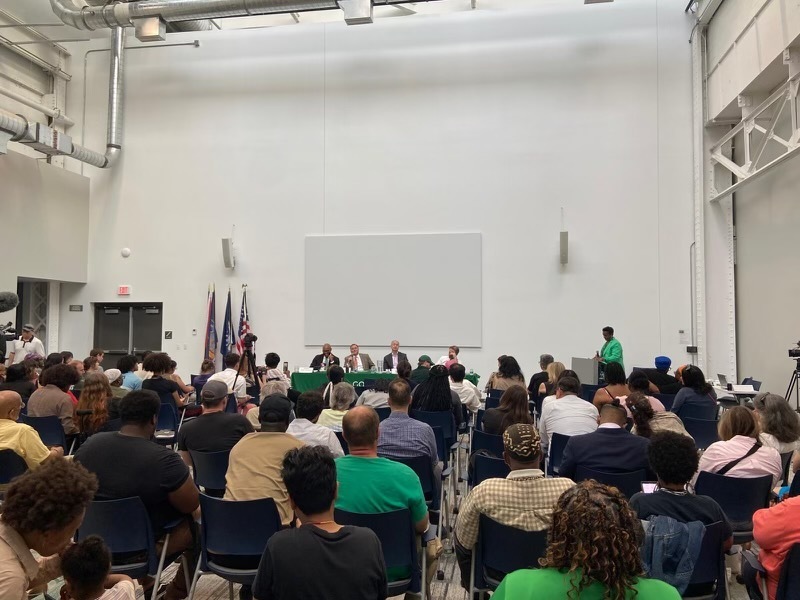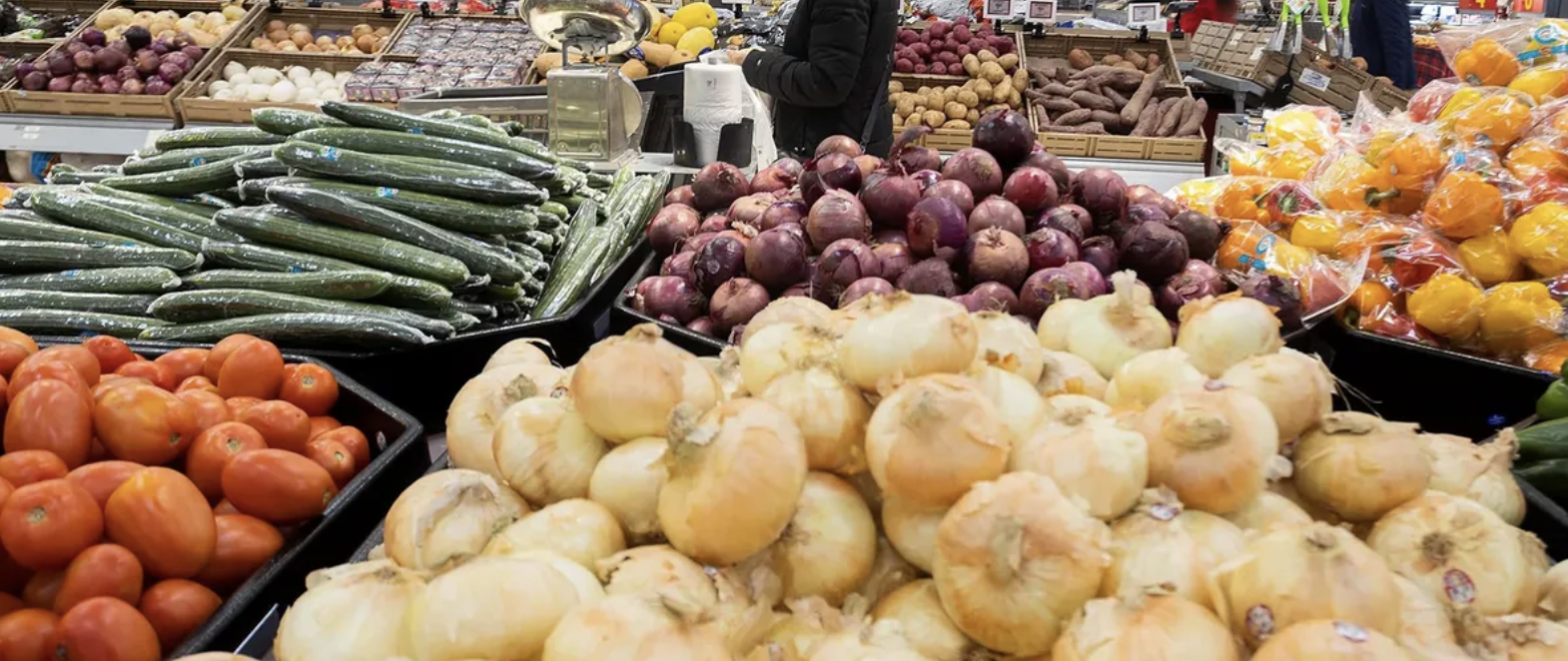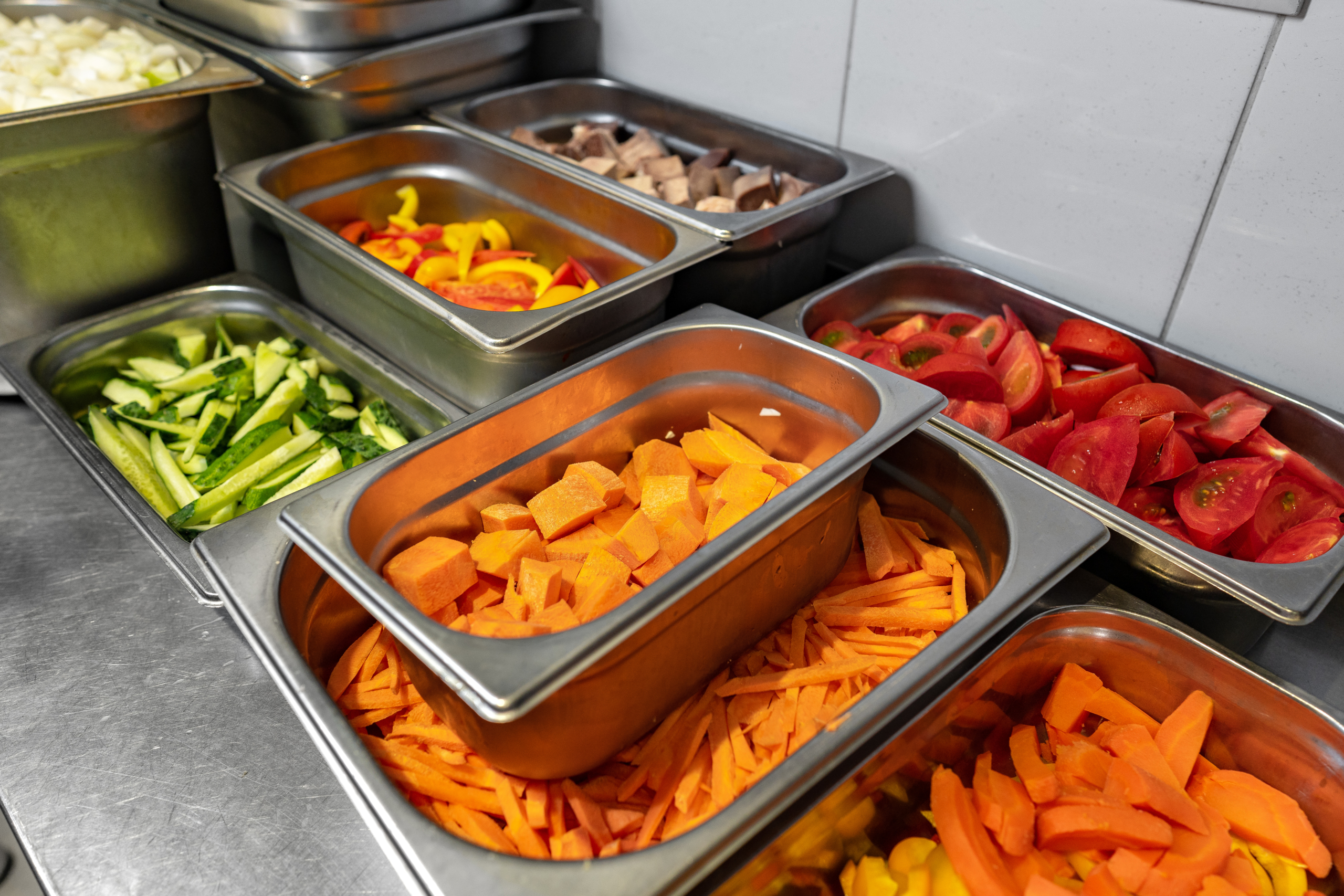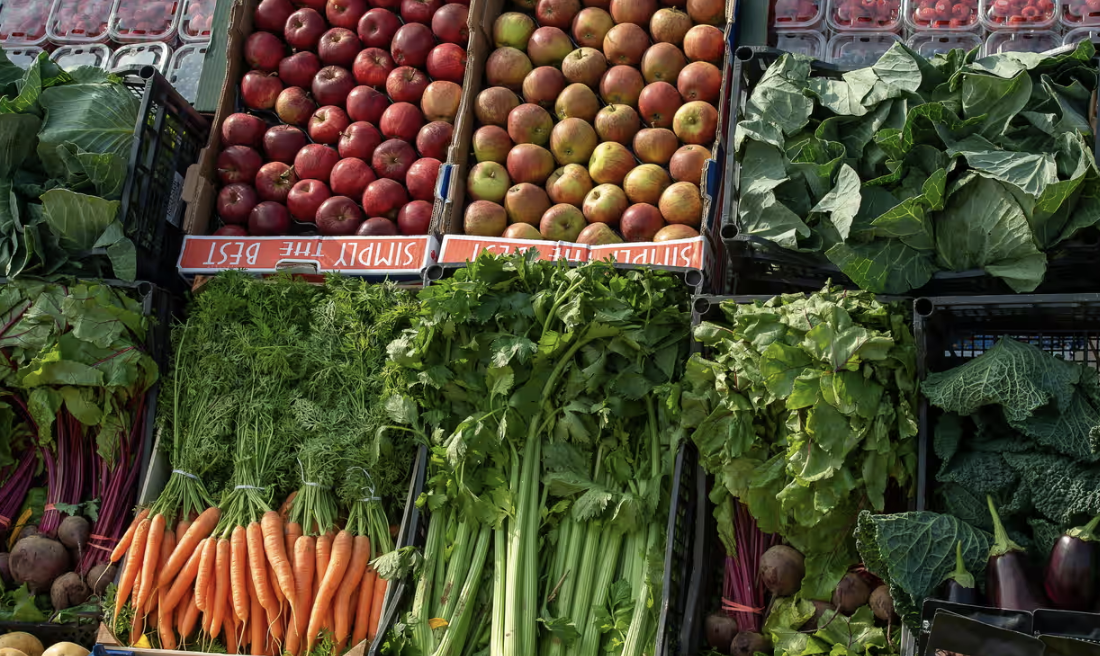The LA-based Center for Good Food Purchasing helps districts and governments lead the way in buying healthy food. Can we get Philly schools on board?
The School District of Philadelphia recently eliminated all iceberg lettuce from its lunchroom meals—well, most of it. “We do still put shredded iceberg lettuce on the hoagie,” explains Amy Virus, who oversees food purchasing for the district. “We are in Philadelphia, and that’s important.”
Iceberg lettuce has a reputation for lacking nutritional substance, while other leafy greens are packed with fiber and iron, and in the past five years the district has had an eye toward improving the nutritional content and environmental-friendliness of its lunches. It has eliminated the styrofoam tray and replaced it with a compostable one, and plans to serve only antibiotic-free chicken starting next school year.
These are steps in the right direction for the district, which serves 90,000 lunches and 57,000 breakfasts every day—26.5 million meals each school year. But the Center for Good Food Purchasing could help them do much more.
The organization, which launched in 2015, works with national and local partners, including school districts, to meet five values in the purchasing of food: local economies, nutrition, a valued workforce, environmental sustainability, and animal welfare. It uses its mass of data and food procurement expertise to push partners toward good food purchasing practices, thus propelling the national food market in the same direction.
The big idea driving the work is that large institutions like governments and schools buy a lot of food—the Philadelphia school district spends $41 million each year on edible items alone—and so they have the power to shift the market toward higher quality, more environmentally-sustainable and fair food. If more people, especially large civic institutions, seek out and employ food suppliers who meet the Center’s five values, and those suppliers have the financial security of large food contracts, costs for things like organic produce and food produced by well-paid laborers could come down for everyday shoppers.
Colleen McKinney, the Center’s Associate Director, compares this central goal to the decreasing price of whole-wheat bread: If enough people want it, companies will produce more of it, and it will no longer cost more than the less healthy alternative. “Aggregating purchasing power and talking specifically about the types of products large organizations want can send market signals, and that’s kind of the whole idea,” she says. Once the market shifts, the eating habits of everyone, not just those eating food served by large institutions, could change for the better.
“We do better by individuals to be serving them better food. We do better by city infrastructure. We do better by education, because if young children are getting proper nutrition, they’re more likely to do better in schools.” says Riordan. “There are so many downstream effects of this.”
The stakes for the impact of such a program here in Philadelphia are high; diet-related diseases plague the city, where 32 percent of adults are obese and 11 percent have diabetes. More than one-fifth of school-aged children in the Philadelphia School District are obese, and residents living in low-income neighborhoods are only half as likely as their peers in high-income neighborhoods to have walkable access to a high-quality grocery store.
“We know that Philadelphia has the highest rate of diet-related disease out of any other large city in America,” says Molly Riordan, who is in charge of food purchasing for the City. “We know that income and diet-related disease have a direct correlation. If you have poor health, and you’re below the poverty line, you’re probably getting city services.” Which means you’re probably also eating the city’s food.
And if you’re a kid living below the poverty line, you’re probably attending a public school, where you may be served two meals a day. The most vulnerable residents, then, are the most likely to benefit from any changes made through partnerships with the Center for Good Food Purchasing.
Efforts to alleviate these trends and their disproportionate impact on residents living in poverty have popped up in recent years: The Food Trust’s School Nutrition Policy Initiative went into public schools and taught kindergarteners about choosing healthy foods and performed hands-on cooking classes for high schoolers, and was ultimately found to decrease the number of young children becoming obese by 50 percent. Restaurateur Mark Vetri’s “Eatiquette” enhanced the quality of several neighborhood schools’ lunches—think Thai turkey tacos instead of pepperoni pizza—and taught students about cooking and dinner-time etiquette in the process.
Systemic and long-lasting change, though, would touch every school, not just those that opt in to special programming. A shift in the market created by institutional buying power via a partnership with the Center for Good Food Purchasing would first reach every school in the district, but could then ripple into our national food market and our communities.
The Center’s values were first identified and the program instituted in Los Angeles in 2012, when members of the Los Angeles Food Policy Council wanted to establish a food procurement plan in the city, but couldn’t find one that matched their values. Once the values and standards were developed, the Good Food Purchasing Program was quickly established in the city government and then replicated in the school district.
Those running the program found that institutions all over the country wanted to adapt the model to their own cities, so they launched the Center to assist in the process. Because of the Council members’ dedication to holding up all five values, the Center now requires that participating institutions work toward improving in all five areas; an organization can’t choose to skip over the animal welfare tenet, for example, because it does not match its agenda.
With the Center’s help, the Los Angeles Unified School District increased its spending on local produce by $12 million, money that had previously been being spent outside the Southern California region. Meanwhile, the Oakland School District increased its fruit and vegetable purchases by 10 percent and, according to a case study by environmental nonprofit Friends of the Earth, reduced its water usage by 6 percent. Simultaneously, Oakland actually decreased its spending by one percent per meal served—$42,000 over the course of the year—negating the oft-voiced concern that eating healthily and locally costs more.
Diet-related diseases plague the city, where 32 percent of adults are obese and 11 percent have diabetes. More than one-fifth of school-aged children in the Philadelphia School District are obese, and residents living in low-income neighborhoods are only half as likely as their peers in high-income neighborhoods to have walkable access to a high-quality grocery store.
According to McKinney, changes in cost depend on how much work the district is already putting into meeting the five values; if the district needs to make massive changes, they’re likely to see some increase in costs.
Neutralizing costs, though, is absolutely possible. McKinney offered as an example the Center’s advocating for a less meat, better meat policy. “Meat is the most expensive product they’re purchasing. We can reduce the amount of meat by producing tacos—a mix of ground beef and beans—instead of a burger patty,” she explains. “Then, we use the savings to redirect purchasing to more sustainable or humane ways.”
And of course, there’s the whole-wheat phenomenon: “As the field moves in the direction of higher quality products, we’ve heard from food service directors that the price of products that used to be much more expensive is coming down because so many districts are asking for the same products, like antibiotic-free chicken,” says McKinney.
The Philadelphia School District is already moving in this direction, beyond just limiting iceberg lettuce. In 2013, the district started to look at its business contracts for ways to do better by the health of Philly’s school children and their communities. It hosts a Pennsylvania Preferred Day each year, when all menu items are grown and processed in PA, and has eliminated artificial colors and sweeteners, bread additives, and high-fructose corn syrup from lunches.
The district is also hosting webinars to push more PA districts to get on board with the strategies they’re employing, which could prove particularly advantageous in amplifying the impact of the Center were the Philly district—the largest in the state—to get on board. They have seen the neutralization of costs in the work they’ve already done; while the compostable tray they now use is more expensive than the styrofoam one they used to use, the district has decreased the number of bowls and cups it has had to purchase because the new tray has compartments.
Even so, that leaves a lot of areas, like going local every day, rather than just once a year, that could benefit from the Center—something that Virus says she’d be open to considering. “I think we’re always open to more information and open to the ideas of how we can do things differently or better when it comes to feeding our schools healthy foods that kids want to eat, so we’re willing to talk to most groups and figure out if there is some synergy,” she says.
The technical support is also a huge plus noted by the Center because the people who run large organizations have so many other responsibilities, especially in schools. “Tracking down information about where products are produced and how they’re produced is time consuming and difficult,” says McKinney. “They just want to serve the best meals that they can; they don’t have time to focus on that kind of research.”
A shift in the market created by institutional buying power via a partnership with the Center for Good Food Purchasing would first reach every school in the district, but could then ripple into our national food market and our communities.
Riordan, who is the Good Food Purchasing Coordinator for the City of Philadelphia, says this technical help was one of the selling points for her when the City, which annually serves 14.5 million meals everywhere from the sheriff’s office to after-school programs, decided to bring on the Center for Good Food Purchasing last October. “We’d been thinking for the past couple of years, how do we move beyond just serving healthy food, which we had been doing for awhile,” says Riordan. “We have standards set in place having to do with nutrition and sustainability, but building off of that effort, we are saying what else can we do?”
The City decided partnering with the Center for Good Food Purchasing would push them in the right direction, and the institution is currently going through the baseline assessment, which should be completed by the end of the summer.
Riordan says the flexibility of the program was also a draw; the Center provides support, but the City of Philadelphia and its constituents have the final say in the crafting of strategies that work for the city. “We know that it’s there and we’re using it as a guidepost,” she says. “But I think that when we adopt a policy, we’re going to be doing it in a way that is organic and germane to Philadelphia because we know that that way we have a much higher chance of achieving our goals.” After the assessment, the city “can look at how our purchasing measures up against the Center’s criteria and its Good Food Purchasing Policy, and be flexible in how we adopt or modify parts of the great work the Center and other cities have already done.”
“We do better by individuals to be serving them better food. We do better by city infrastructure. We do better by education, because if young children are getting proper nutrition, they’re more likely to do better in schools.” says Riordan. “There are so many downstream effects of this.”







